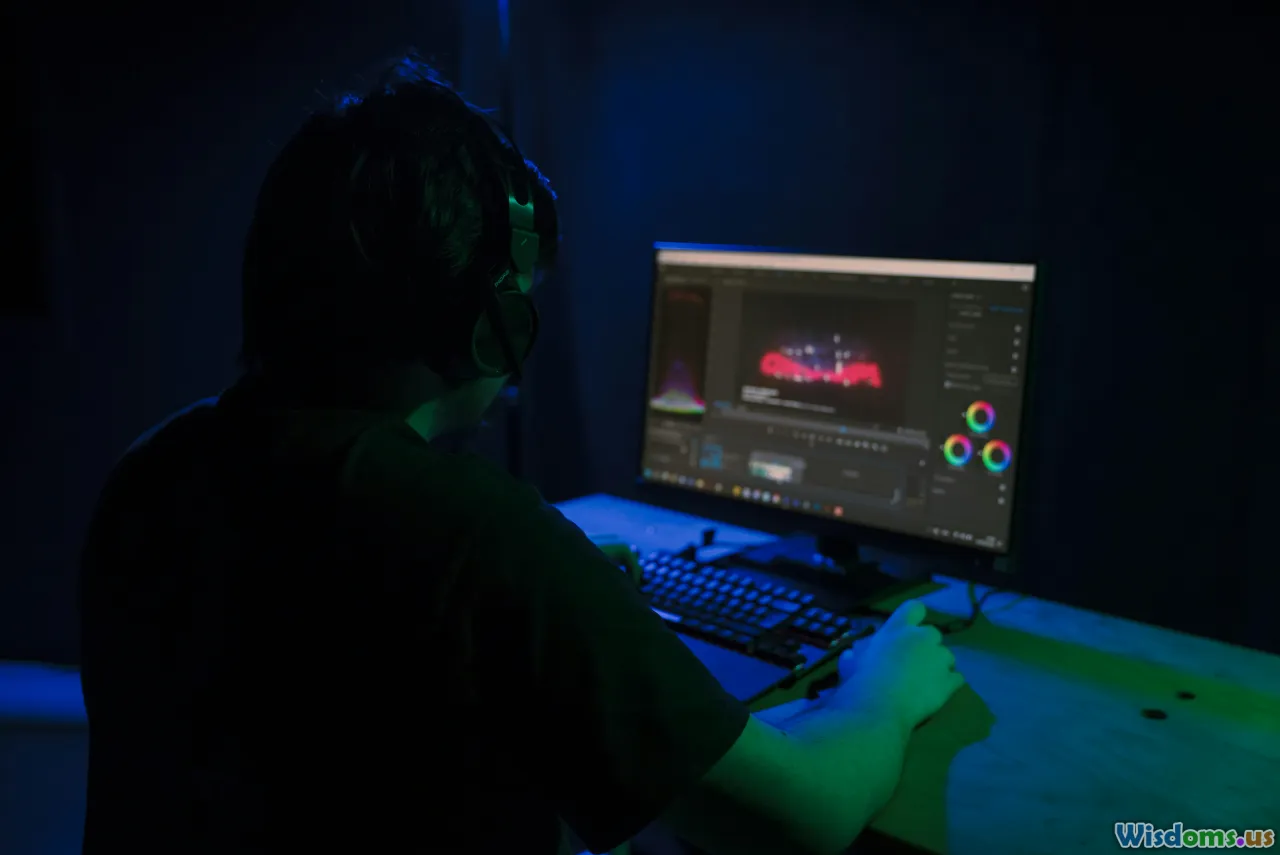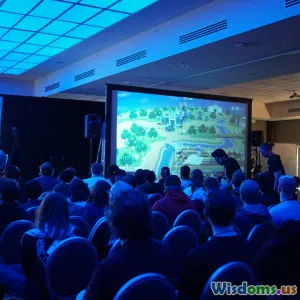
Why Indie Games Are Leading Innovation in Game Design
16 min read Discover how indie games are driving innovation in game design with creative risks, unique mechanics, and fresh perspectives. (0 Reviews)
Why Indie Games Are Leading Innovation in Game Design
The landscape of video games has shifted dramatically in the past decade. Once dominated by blockbuster "triple-A" titles with colossal budgets, the industry has seen a resurgence of creative spirit led by independent (indie) developers. Far from simply echoing mainstream hits, indie games have carved a niche as hotbeds of innovation in game design. But what drives this wellspring of originality, and what lessons can the broader industry glean from these small, passionate teams? Let’s embark on a journey into the forefront of creative gaming.
The Freedom to Experiment

One of the defining traits of indie studios is their creative freedom. Larger game companies often face constraints rooted in market risks, shareholder expectations, and established intellectual property trends. In contrast, indie developers, unburdened by corporate oversight, can dare to take risks and challenge conventions.
Consider the revolutionary puzzle gameplay in Jonathan Blow's Braid (2008). The game used time manipulation as its core mechanic, weaving it tightly into both story and platforming sequences—an idea unlikely to survive strict publisher gatekeeping. Similarly, Undertale (2015) by Toby Fox subverted traditional role-playing tropes by allowing players to finish the game without killing anyone—a radical concept with immense emotional payoff.
The willingness to experiment isn't just about mechanics; indie games often explore new narratives and art styles, such as the childlike crayon visuals in Drawn to Life or the haunting minimalism of Limbo. This openness has turned indie games into an incubator for new genres and experiences.
Resource Limitations Breed Ingenious Solutions
Working with limited budgets and sometimes solo development, indie creators are compelled to devise innovative solutions. These constraints frequently result in an emphasis on tight, unique gameplay rather than expensive graphics or sprawling worlds.
Take the resurgence of pixel art. Studios like Subset Games, creators of FTL: Faster Than Light (2012), embraced retro aesthetics, using a minimalist art style which not only evokes nostalgia but also allows resources to be funneled into deep, emergent gameplay systems. Likewise, Celeste (2018) by Matt Makes Games employs a relatively simple visual palette, instead dazzling players with precise, emotionally resonant platforming.
This approach differs strikingly from the often risk-averse big-budget methodology where the focus is on graphical fidelity and hours of content. For many indie developers, limitations in manpower or budget serve as a catalyst for breakthrough ideas, rather than barriers, producing smaller but far more innovative experiences.
Community and Direct Player Engagement

Few communities are as closely knit as those surrounding indie games. Without massive marketing campaigns, indie devs rely heavily on direct engagement with their players for feedback, testing, and promotion.
Crowdfunding platforms like Kickstarter and IndieGoGo have allowed creators not only to source budgetary needs but to cultivate a loyal fanbase before release. The Shovel Knight (2014) campaign, run by Yacht Club Games, is a notable success story—raising more than $300,000 from nearly 15,000 backers, their devoted community influenced core design decisions during development.
Moreover, open development diaries, frequent social media interaction, and widespread participation in beta testing ensure that innovations resonate with real players. Streamers and content creators play a pivotal role in game discovery, as seen with the explosive popularity of Among Us years after its initial, quiet launch.
This level of collaboration creates games highly attuned to the audience’s desires. New ideas can be rapidly iterated, tested, and refined, setting a feedback-driven pace that most big studios struggle to match.
Bold Narrative and Emotional Depth

Mainstream games have made strides in narrative, but indie games consistently push the boundaries of interactive storytelling and emotional involvement. Free from the mandates of mass-market appeal, indies have the latitude to delve into complex themes and evoke profound player empathy.
One shining example is What Remains of Edith Finch (2017) by Giant Sparrow. This BAFTA-winning title crafts a compelling family saga through unconventional gameplay vignettes, exploring life, loss, and memory. Similarly, To the Moon (2011) by Freebird Games articulates a touching science fiction narrative about love, sacrifice, and regret, using limited mechanics but extraordinary writing and music.
Indie games frequently tackle social issues, mental health, or abstract concepts in ways considered commercially risky for triple-A publishers. Gris (2018) personifies grief through a breathtaking painterly world, while Papers, Please (2013) uses dystopian bureaucracy simulation as profound social commentary. Such games enrich the medium and expand its capacity to tell stories, delivering player experiences rarely found elsewhere.
Lower Financial Risk Encourages Daring Innovation

A striking feature of indie game development is its lower overhead. Without the need to spend tens (or hundreds) of millions, indie teams can focus on making games that foster innovation—even if commercial returns are modest.
The breakout hit Slay the Spire (2019), a pioneering deck-building roguelike, was developed by a handful of people at MegaCrit and funded mainly via Early Access. The game’s wild synthesis of genres—at its inception, a daunting commercial risk—opened doors to a once-unlikely new category. Similar genre-defying hits like Crypt of the NecroDancer (2015) have flourished as indie experiments that major studios would likely dismiss.
Because their financial stakes are lower, indies can afford to "fail forward," learning rapidly from incomplete projects or missed markets, knowing another (possibly radically different) project can swiftly take its place. This encourages rapid prototyping, continual improvement, and bold experimentation—vital ingredients for fostering true innovation.
The Solo Developer Renaissance

One unique aspect of indie innovation is the rise of single-person developers. Solo creators like Lucas Pope (Papers, Please, Return of the Obra Dinn) or Eric Barone (Stardew Valley) are responsible for every facet of their games, from design to code to music.
This highly personal involvement infuses their creations with a distinct voice and coherent vision too often diluted in committee-driven major titles. Stardew Valley’s runaway success, blending farming simulation with social roleplaying and was cultivated over four years by Barone working largely alone—demonstrates not only the power of personal storytelling but of mastering every creative tool personally.
Solo projects frequently birth genre hybrids or entirely new gameplay experiences, unconstrained by the need to align with any particular trend, department, or stakeholder. As game engines become more accessible and digital distribution simplifies reaching audiences, more solo creators will likely propel the next wave of radical new design concepts.
Redefining the Economics of Fun

Innovation in game design also extends to the business models and distribution methods. With digital storefronts like Steam, itch.io, and mobile app stores, indie developers have unprecedented access to global markets at minimal cost.
Games like Among Us and Hollow Knight (2017) found massive success at affordable price points, often supported by sales, bundles, or pay-what-you-want models. Mobile hits such as Monument Valley (2014) and Alto’s Adventure owe much of their global proliferation to the accessibility and low upfront cost, a trend historically scorned by triple-A publishers.
These flexible approaches—whether early access, demos, or post-launch free content updates—help indies stand out, reducing risks associated with “try before you buy” while enabling niche or experimental games to find their audience. Players feel empowered to invest in varied experiences, spurring yet more innovation as developers chase underserved markets or abandoned genres.
Cross-Pollination, Trends, and the Wider Industry

The impact of indie innovation doesn’t stay isolated; it has profoundly shaped broader development trends. Many breakthroughs that debuted in indie circles have been appropriated and evolved by larger studios.
Mechanics such as roguelike progression (Dead Cells, Hades), emergent procedural storytelling (Dwarf Fortress, RimWorld), and asynchronous multiplayer (Dark Souls, Journey) originated or blossomed within indie ecosystems, later seeping into mainstream blockbusters.
Major corporations—always keen to adopt trending mechanics—now publicly embrace indie-inspired ideas, sponsoring showcases (Nintendo’s “Nindies,” Xbox’s [email protected]) and pursuing collaborations. The ever-growing pool of former indie devs moving into established studios ensures a continual transfer of know-how and design DNA.
This cross-pollination cements the role of indie games as industry pioneers, continually disrupting, inspiring, and challenging the status quo.
Tips for Aspiring Indie Innovators

If you’re inspired to join the tide of indie innovators, here are key tips derived from success stories across the sector:
- Solve Real Problems: Assess what’s missing in the gaming landscape. Perhaps you long for the return of quirky genres or unexplored themes. Use your instincts as both a creator and a consumer.
- Prototype Fast: Focus on testing core mechanics rapidly, seeking out the "fun" as soon as possible. Clunky graphics or rough code at the start are often improved later. Early player feedback is invaluable.
- Embrace Limitations: Treat resource limitations as creative challenges, not setbacks. Some of the most memorable games came out of logistical necessity—a unique aesthetic, a focus on compactness, or ingenious simplification.
- Engage Your Community: Share your journey via social media, dev logs, or betas. Openness forges loyal fans, attracts advice, and helps gauge what resonates.
- Stay Passionate: Choose themes or mechanics that fascinate you personally. Player connection emerges from genuine passion and craftsmanship. Let your emotions infuse your design without fear.
- Stay Informed: Watch recurring industry events like the Independent Games Festival, follow dev blogs, and connect with online communities (Discord, Twitter/X, Reddit’s /r/gamedev).
By remaining agile, responsive, and hungry for novelty, aspiring indie developers can continue leading the vanguard of original game design.
The Unstoppable Momentum of Indie Innovation

What began as a necessity—small teams stretching meager resources—has blossomed into one of gaming’s greatest strengths: the ability to take creative risks, foster tight community connections, and push the boundaries where larger companies hesitate to tread. Indie developers are now held in the same esteem as major studios, finding their games featured at global events and topping bestseller lists. As tools become more available and players continue to seek novel, heartfelt, or daring experiences, the pace of indie-driven innovation is only poised to accelerate.
For gaming enthusiasts and creators alike, the indie scene offers a wellspring of inspiration—and a reminder that in the art and science of games, bold ideas and passionate voices need never wait for permission.
Rate the Post
User Reviews
Popular Posts
















